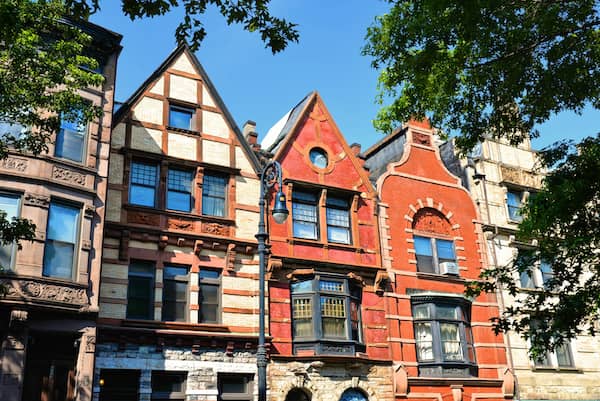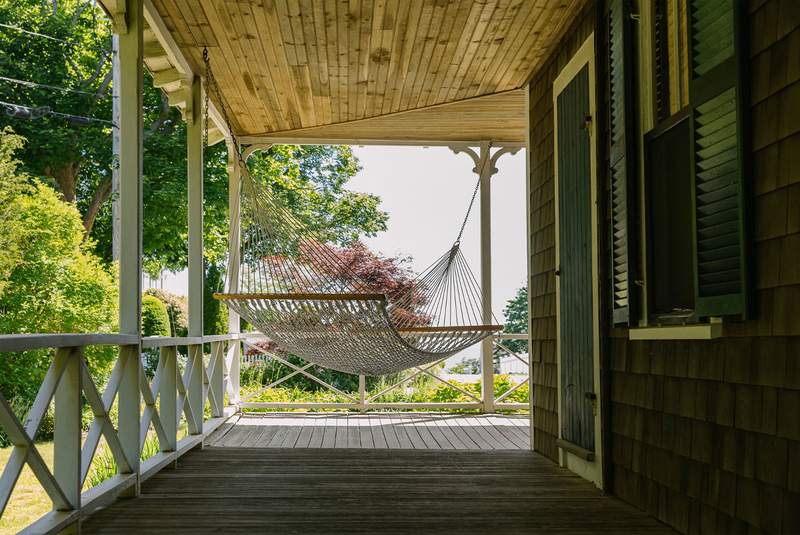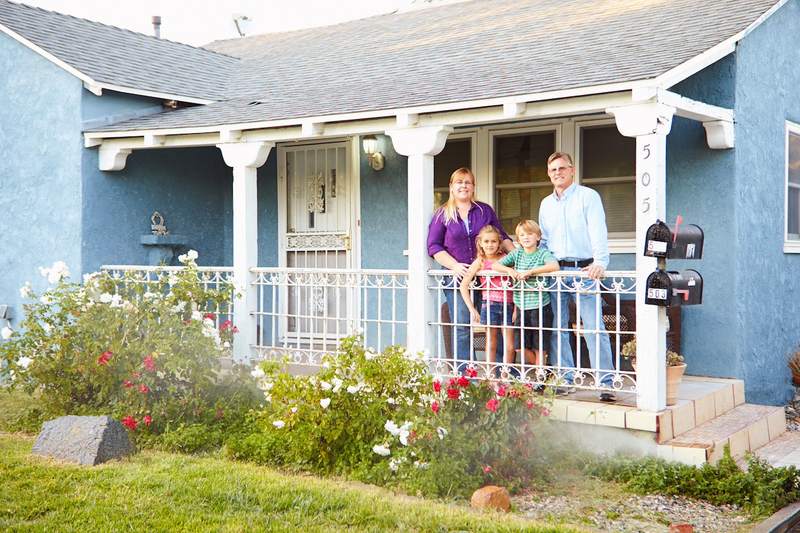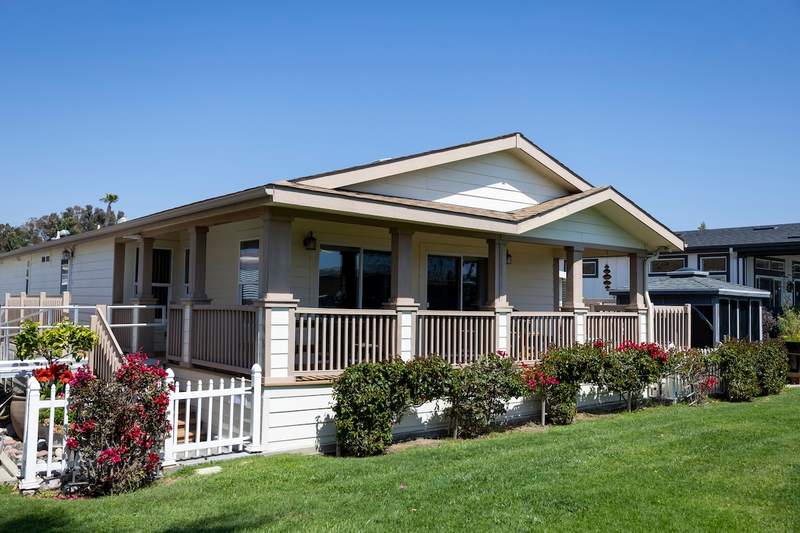For many people, there’s something magical about owning a historic home. From butler’s pantries to Dutch doors to gothic-style windows, historic homes aren’t only uniquely charming, but they hold a piece of American history. However, along with all the beauty they offer, their age can make them costly to repair – and what started as a dream home can quickly turn into a money pit.
So, if you’re enamored by the charm of a historic home and think it’s right for you, make sure to consider all the factors – which we’ll explore below – before owning this type of home.
What Is A Historic Home?
In addition to the old-world aesthetic of historic homes, a home that’s considered “historic” must play a significant role in the history of the nation. The National Park Service (NPS) manages historic landmarks and the National Register of Historic Homes (NRHH), which determines if a home is historic and worthy of preservation.
Additionally, many state and municipal governments have historic districts with homes designated as historic. However, the rules can differ at the state and local levels from those of the NRHH, and they’re sometimes far stricter.
Buyers interested in buying a home designated as historical need to be aware of the joys and constraints of owning this type of home – and some of the challenges they may face when applying for a mortgage or buying homeowners insurance.
See What You Qualify For
Buy A Home
Discover mortgage options that fit your unique financial needs.

Refinance
Refinance your mortgage to have more money for what matters.
Tap Into Equity
Use your home’s equity and unlock cash to achieve your goals.
What Makes A House Historic?
While it may seem like old or vintage homes and historic homes are one and the same, this simply isn’t the case. Historic homes have an official designation as historic homes, or they’re located within a historic district; old homes are properties that are usually 50 years old or older.
NRHH Criteria
For a home to be designated a historic property by the NRHH, it generally needs to be at least 50 years old (with some exceptions) and fall into one of these categories:
- The house is associated with events that significantly contributed to American history.
- The house was significant in the life of an important historical figure.
- The house is characteristic of a type, period or method of construction that represents the work of a master or possesses extraordinary artistic values.
- The house has yielded or may be likely to yield important historical information.
Examples Of Important Historic Houses
Historic homes can be found all over the country. They include homes that have an infamous story behind them, homes that are a landmark to a historical event, homes that inspired movies, and homes that managed to hold up through a disastrous storm. Here are some examples of historic houses:
- The Wrigley Mansion in Arizona: William Wrigley Jr., the chewing gum tycoon, built his Spanish-style home overlooking Phoenix in 1929. The home is now visited by many tourists and has been nicknamed “Doublemint” or the “Juicy Fruit.”
- San Francisco’s Painted Ladies: Developed between 1892 and 1896, the famous Postcard Row in San Francisco was not only the backdrop of the American sitcom “Full House,” but it’s one of the most photographed streetscapes in the Golden State.

- Oheka Castle in New York: Huntington’s Oheka Castle is the second largest private residence ever built in America. The estate has made cameos in many popular Hollywood films. This is also rumored to have been some inspiration for the infamous Gatsby estate from F. Scott Fitzgerald’s “The Great Gatsby.”
- Bishop’s Palace in Texas: Bishop’s Palace is Galveston’s most famous building. Inside is a fireplace lined with pure silver and originally built for Walter Gresham by Nicholas Clayton. The home held strong and practically untouched through the Great Storm of 1900.
What Is A Historic District?

Historic districts are groups of buildings, properties or real estate that have historic or architectural significance. Historic districts are selected at the federal, state or local level. Because the overall charm of the neighborhood generates revenue for the community, local designations tend to have the strictest and strictly enforced rules.
In some cases, a home may not meet the criteria to be a historic home on its own. But, if part of a historic district, it may gain the rights to historic preservation. On the other hand, some houses may avoid the historic protections if they’re considered “noncontributing.”
Examples Of Important Historic Districts
Here are a few examples of historic districts around the nation.
- Henderson Place Historic District in New York: On 87th Street between York Avenue and East End Avenue sits Henderson Place. These buildings were once included in a development of 32 houses. Eight of the remaining historic buildings have been demolished, but the ones that remain are in Queen Anne architectural style.
- Victorian Row Historic District in California: Representing the most cohesive surviving portion of the 19th-century business district in Oakland is The Victorian Row Historic District. This is a vital part of the district’s role in commercial development..
- Thornton Park in Florida: Of the six local historic districts in Orlando, Thornton Park is the most popular. Filled with restaurants, salons and boutiques, this revitalized community commemorates its history while incorporating fun, contemporary attractions.
Pros Of Owning A Historic Home
There’s a lot to love about owning a historic home. This includes the quirky features and old-world charm. Here are some other advantages of owning a historic home.
The Emotional Connection
History buffs often love the art, history and architecture that come with owning a historic home. The enchanting features and aesthetic of the home make owning such a unique property special. Buying a historic home isn’t only about putting down roots, but it’s about the emotional connection buyers feel with the property.
A Protection Of History
When you purchase a historic home, you’re protecting a home’s historical significance and its neighborhood. Preserving its significance can maximize tourism and protect home values.
So, you know that your neighbors also have a duty to maintain the character and history of the district. This may give you peace of mind, knowing they must uphold the standard set by the community.
Greater Appreciation
Well-preserved historic homes in a designated historic district can outpace existing home values, generally speaking. While official figures aren’t kept regarding the increase in value of historic homes, a study from New York City indicates that historic designation does raise home values faster, while a study from Washington, D.C. offered mixed results in that residential home values rose while condominium prices fell.
Possible Tax Benefits
Some tax incentives are available for historic preservation, particularly at the state and local levels. For example, the Federal Historic Preservation Tax Incentives program may offer you a 20% tax credit for restoring a historic building with the intention to rent. Visit local and state preservation departments to learn more about tax relief you may qualify for.
Financial Assistance
If a historic home seems out of reach, grants or other forms of financial assistance can help pay for historic preservation efforts. To review the grants available, visit HistoricFunding.com, which manages a comprehensive funding resource for historic preservation efforts.
Fund your renovations with a cash-out refinance.
See what you qualify for!
Cons Of Owning A Historic House
Although owning a historic property has plenty of advantages, it may require more care and upkeep than you initially expected. Before you buy a historic home, here are some drawbacks worth considering.
Renovations Are Closely Regulated
Being a homeowner in a historic district is like joining a very conscientious homeowners association. While neighbors may share a love of history, they’ll also have a say in any changes homeowners want to make that could impact the district as a whole.
Also, it’s important to point out that some historic districts, such as those in tourist-heavy locations, may be monitored very closely. In such districts, the constraints may be even stricter than in many HOAs.
Renovations Will Cost More And Take Longer
When completing renovations or repairs on a historic home, methods and materials will need to be approved. The approval process can delay renovations and add to costs and labor if more highly trained specialists need to be hired. Additionally, you must apply for permits when the renovations impact the exterior of the home.
Also, if a home is a certain age, you may be required to make renovations or repairs more often. Again, while some state and local districts don’t require certain upkeep, others may – adding to the expenses of maintaining the property.
Insurance And Financing Will Cost More
Insuring and financing a historic home can be a little more complicated than with a traditional home. Rebuilding or repairing a historic home can be expensive, making it an unattractive prospect to insurers. But some insurance companies specialize in insuring historic homes. Therefore, while you might have to pay more for coverage, at least you can hopefully find an insurance company willing to sell you a home insurance policy.
Keep in mind, though, that some lenders might shy away from a historic home outside of a well-established district, because its value may be unique or niche.
Historic Home FAQs
Up next are some frequently asked questions about historical homes.
Why are historic homes important?
Historic homes are important in our society because they maintain the architectural style and historical heritage of the community surrounding them. With new construction popping up in many places, historic homes offer that old charm value within various cities and towns.
Is buying a historic home a good investment?
Although renovating and repairing a historic home can be costly, the long-term benefits might be worth it. Historic homes tend to have a higher property value. So, if you buy, repair and hold on to the property, it could definitely be a good investment in the future.
What’s the difference in a historic house vs. an old house?
Old homes and historic homes have a few key characteristics that set them apart. Historic homes have historic building designations that make them subject to preservation rules and regulations. On the other hand, owning a charming old home comes without those restrictions.
The Bottom Line: Buying A Historic Home Offers A Sanctuary From The Modern World
Owning a historic home comes with unique benefits and challenges that might be more than worth it to a history lover. But, before purchasing a piece of history, make sure you understand the requirements of ownership and determine whether the perks associated with the purchase outweigh the hoops you’ll have to jump through.

Ashley Kilroy
Ashley Kilroy is an experienced financial writer who writes for solo entrepreneurs as well as for Fortune 500 companies. She is a finance graduate of the University of Cincinnati. When Ashley isn’t helping people understand their finances, you may find her cage-diving with great whites or on safari in South Africa.












